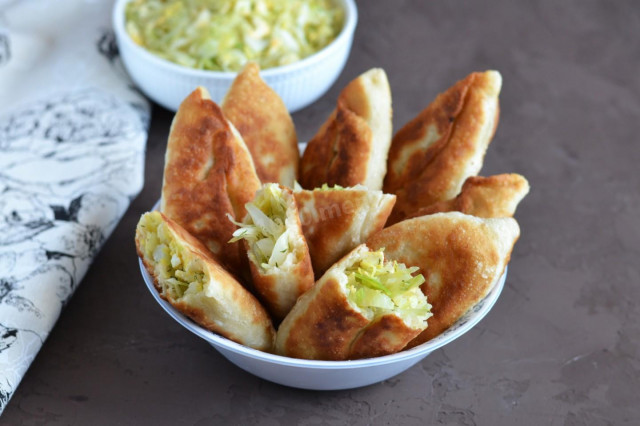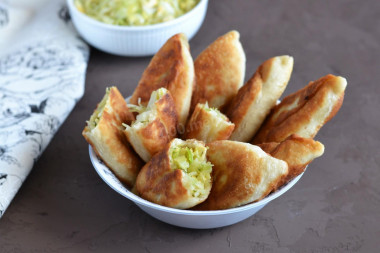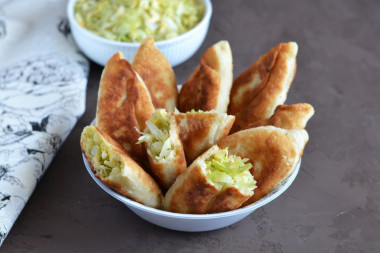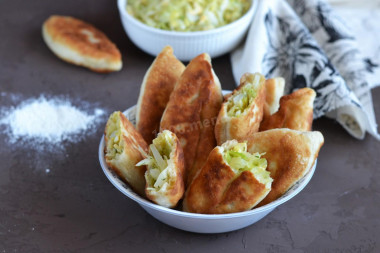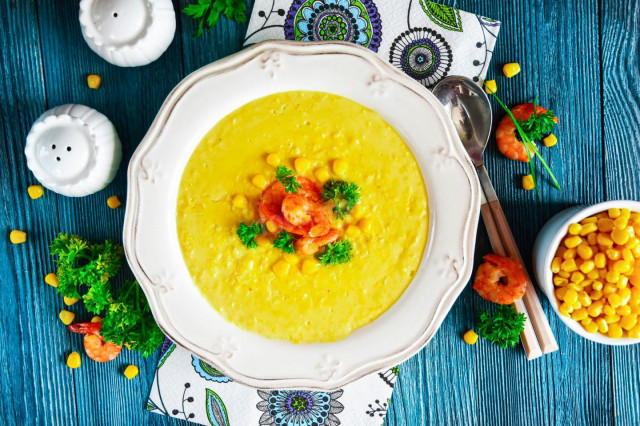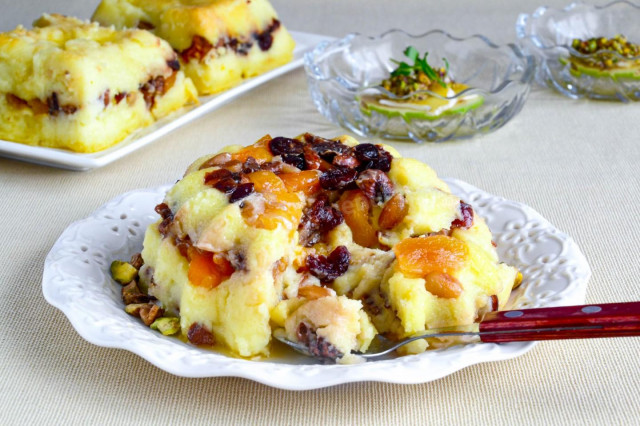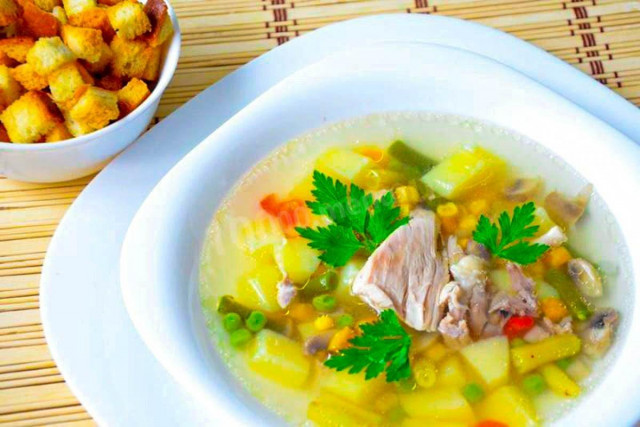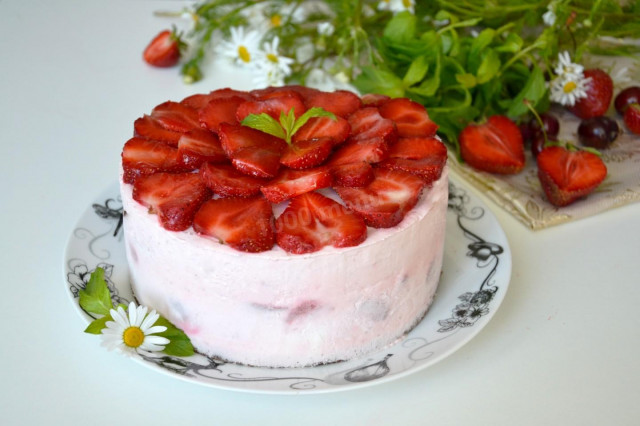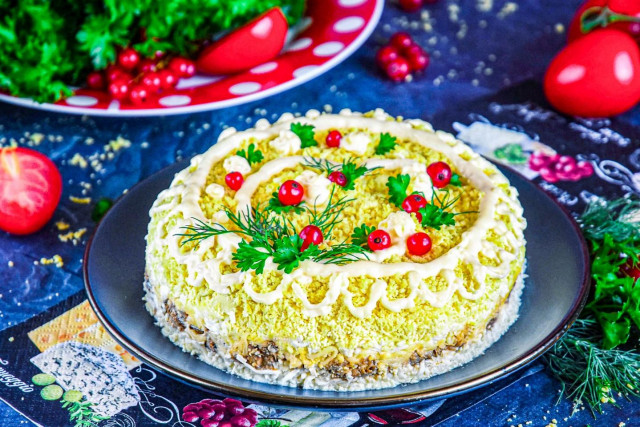Composition / ingredients
Step-by-step cooking
Step 1:
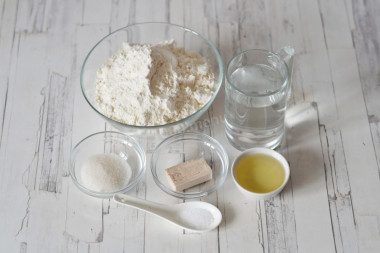
Prepare the necessary ingredients for the dough. Take the flour of the highest grade. Yeast can be used both live pressed and dry in granules. In any case, look at the expiration date: yeast should be fresh. If you use pressed yeast, they should have a uniform creamy shade. If you choose dry yeast, we need those that are activated with warm water, so READ the INSTRUCTIONS.
Step 2:
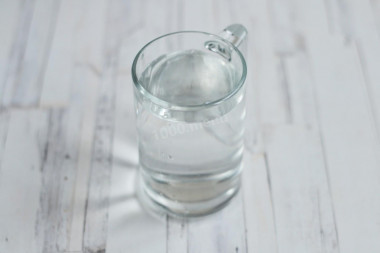
Heat the water to 35-40°C. To check the desired temperature, drop a little water on the inside of your wrist. If the water feels slightly warm, almost not felt on the skin, then everything is fine. If there is a feeling of hot or cold, then the water is either above the desired temperature or below. And, accordingly, it must either be cooled or reheated.
Step 3:
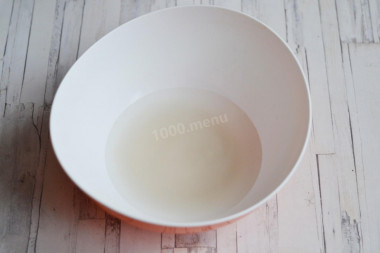
If you use live yeast, then crumble them into warm water and add sugar. Stir everything. It is not necessary to insist such yeast. They are already active.
Step 4:
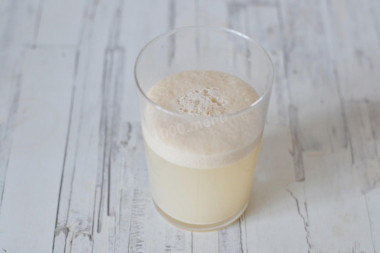
But the dry ones need to be activated: pour sugar and yeast into warm water, stir and leave until a fluffy cap appears. If the caps did not appear, then the yeast was killed and it is impossible to cook further with them. You need to repeat the process with fresh yeast.
Step 5:
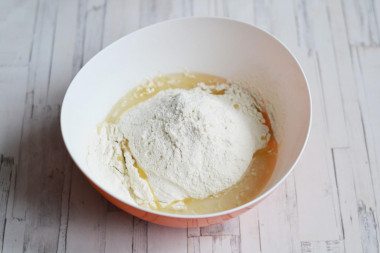
Pour the yeast mixture into a deep bowl. Sift all the flour into it through a sieve, add salt and pour in vegetable oil.
Step 6:
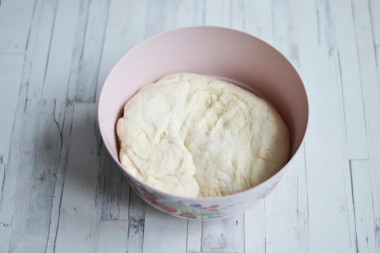
Knead a homogeneous slightly sticky dough. You need to knead with your hands for about 7 minutes. If you mix it in the kitchen machine, then the same amount.
Step 7:
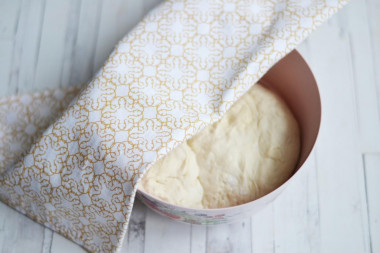
Cover the dough with a towel and leave it warm for 1 hour. After an hour, the dough will fit and you can make pies from it.
Step 8:
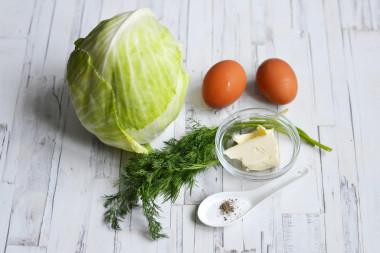
While the dough is coming, prepare all the necessary ingredients for the filling. You can use any filling sweet and unsweetened. I was making pies stuffed with cabbage. Cabbage can be used both young and last year's. You can replace dill with other favorite greens (parsley, cilantro, green onions) or make a mix of different types of greens.
Step 9:

Pre-melt and cool the butter. Important! If you melt it in the microwave, then do not use dishes with golden ornaments, metal dishes or dishes with metal coating. Otherwise, an unplanned fireworks display will occur in the microwave.
Step 10:
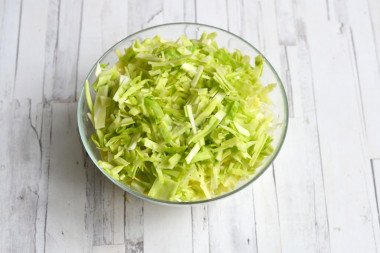
Chop the cabbage thinly, removing the stalk and part of the hard leaves next to it.
Step 11:
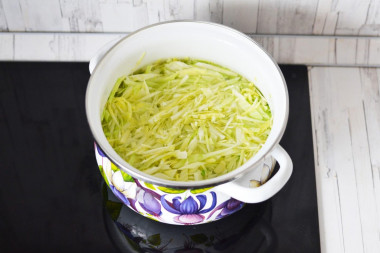
Boil 600 ml of water in a saucepan (according to the amount of cabbage). Put the cabbage in boiling water, bring the water to a boil again and blanch over medium heat: young cabbage for about 4 minutes, old cabbage for about 6-7 minutes. During this time, the cabbage should become soft.
Step 12:
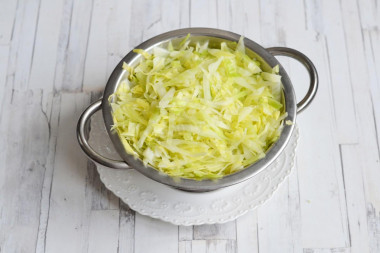
Flip the cabbage into a colander, cool and remember with your hands to remove excess moisture.
Step 13:
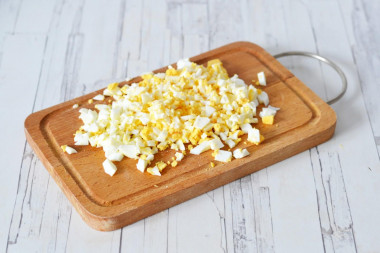
Boil hard-boiled eggs, cool and peel, then finely chop with a knife. The filling should be without large pieces that could damage the dough when forming pies.
Step 14:

Wash the greens, dry them, shake them well, and chop them finely.
Step 15:
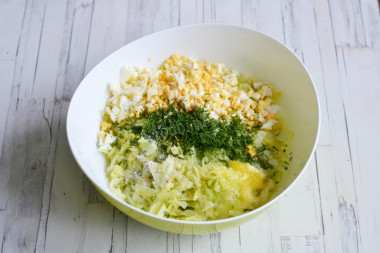
In a bowl, combine all the prepared ingredients for the filling. Season the filling with salt, pepper and mix well.
Step 16:

Divide the approaching dough into 12-14 identical pieces. Roll each piece into a ball with your hands.
Step 17:
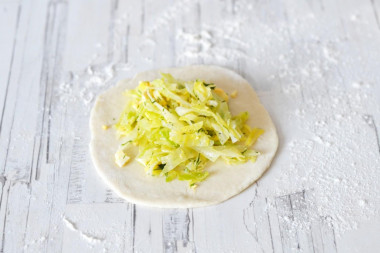
On a floured surface, roll out each ball of dough into an even circle with a rolling pin. The size of the circles is about 10-12 cm . Put 1-2 tablespoons of cabbage filling on the dough.
Step 18:
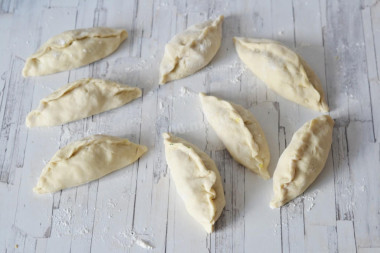
Carefully pinch the edges of the dough, forming an oblong patty. In the same way, blind the rest of the pies.
Step 19:
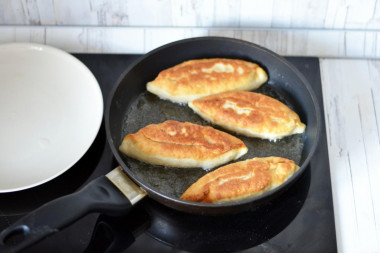
Heat the vegetable oil in a frying pan so that it completely covers the bottom of the pan. Lay out a few pies seam down and fry on a slightly higher than average heat (I have this mode 7 of 9) until golden brown for 3-4 minutes (focus on your stove and frying pan: it may take more or less time). Then turn the pies to the other side and fry about the same amount until golden brown.
Step 20:
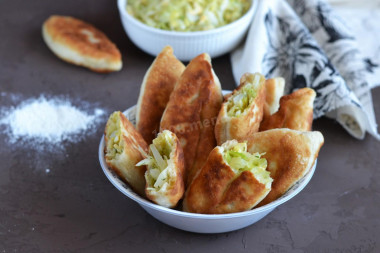
The pies are ready. Enjoy your meal!
--------------------
Be prepared for the fact that flour may require a little more or, conversely, less than indicated in the recipe. You need to focus on how the dough should turn out (dense, soft, liquid, etc.). There is a lot of useful information about why flour, even of the same variety, can have completely different properties,
read this article
.
Caloric content of the products possible in the composition of the dish
- Chicken egg - 157 kcal/100g
- Egg white - 45 kcal/100g
- Egg powder - 542 kcal/100g
- Egg yolk - 352 kcal/100g
- Ostrich egg - 118 kcal/100g
- Ground black pepper - 255 kcal/100g
- Dill greens - 38 kcal/100g
- Pressed yeast - 109 kcal/100g
- Whole durum wheat flour fortified - 333 kcal/100g
- Whole durum wheat flour universal - 364 kcal/100g
- Flour krupchatka - 348 kcal/100g
- Flour - 325 kcal/100g
- Granulated sugar - 398 kcal/100g
- Sugar - 398 kcal/100g
- Butter 82% - 734 kcal/100g
- Amateur unsalted butter - 709 kcal/100g
- Unsalted peasant butter - 661 kcal/100g
- Peasant salted butter - 652 kcal/100g
- Melted butter - 869 kcal/100g
- Vegetable oil - 873 kcal/100g
- Salt - 0 kcal/100g
- Water - 0 kcal/100g
- White cabbage - 28 kcal/100g
- Boiled white cabbage - 21 kcal/100g

